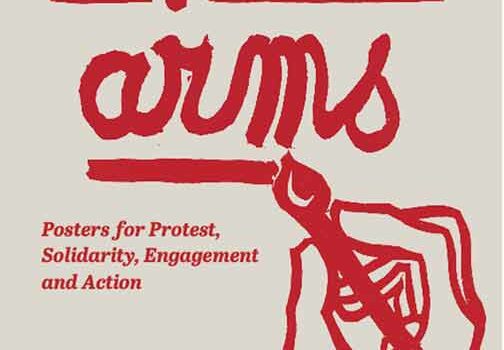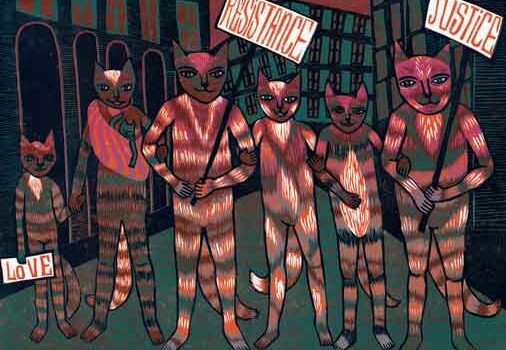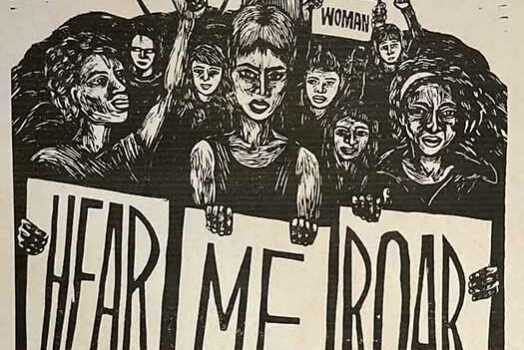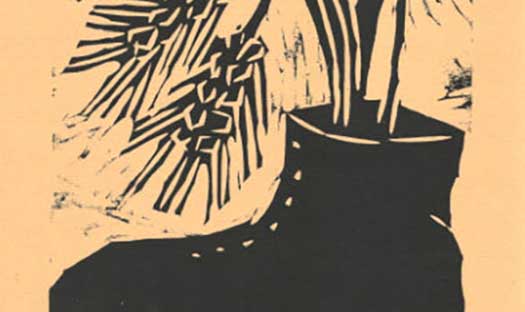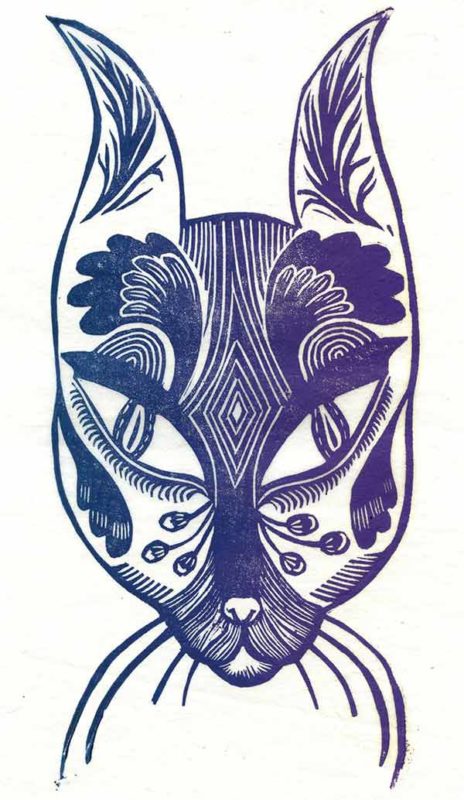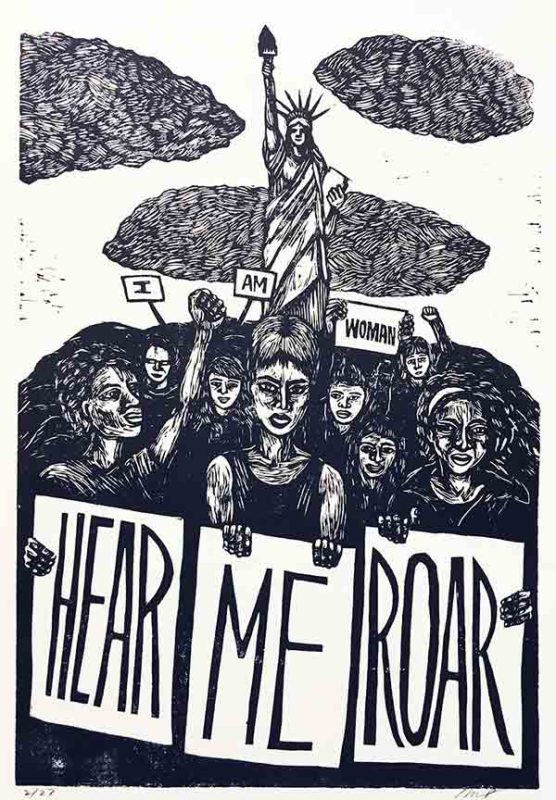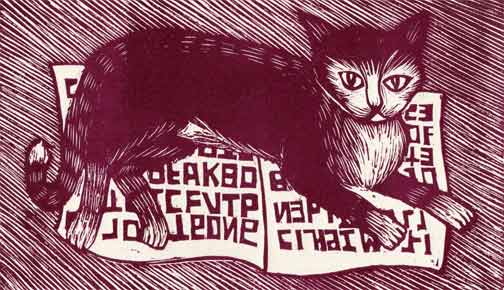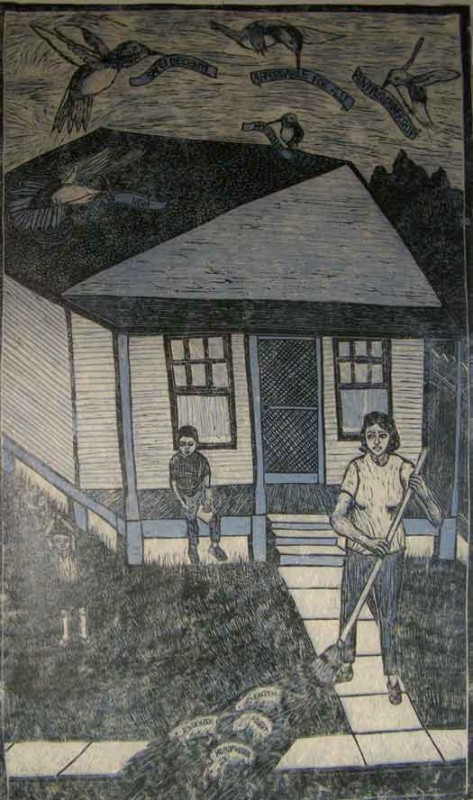
To purchase a copy, you can click HERE.
To check out the website for this project, click HERE.
Molly: What politicized you early on as a feminist and how did you become involved in reproductive justice issues?
Virginia: My father was active in social justice issues throughout my life, so that was instilled in me. I was a young, feminist artist when I was at Bard in 1971. I had always wanted to be a painter, but when I arrived there were all these male, post-abstract expressionist teachers who were angry about the popular consensus that painting was dead. That was hard for me. There were no women in the painting department at that time. Through the Feminist Alliance at Bard, we were able to recruit more women artists. We were able to get Elizabeth Murray, and although she was not an overtly political person she was a great inspiration to me. She was a woman, a painter, a mother, a feminist and she said to me, “you can do it all.”
I’ve always had a secret interest in physiology and the body, but I never thought of myself as a science person by any stretch of the imagination. I got involved in reproductive rights because there were no reproductive health services at Bard. The health service was basically an infirmary with a nurse in a white hat and uniform who took your temperature and gave you an antibiotic. So we started a Jitney service for women to go to Planned Parenthood in Hudson. Also around that time I went to a woman gynecologist to try to get a prescription for the birth control pill. The woman was awful and basically called me a slut. It was one of the worst experiences, and this was from a woman! Some of my friends had experienced traumatic illegal abortions. So the accumulation of all these events pointed to what was wrong with women’s health and women’s rights.
My friend told me about a mother and daughter team who visited Bard University to give a workshop on self-help exams- Lolly and Jeanne Hirsch. They put out The Monthly Extract: An Irregular Periodical. I also had a friend who owned a speculum and I was totally fascinated with it. This was also around the time of the Our Body Ourselves Collective out of Boston. I started a self help group with several other women at Bard, and we learned how to perform a speculum exam. It strikes me as funny that I led this because I was more modest than some, but there I was jumping up on a table and inserting a speculum in front of ten other women.
I became more and more interested in the body, women’s health care, contraception and reproductive justice. The only career choice I was aware of was doctor or nurse. I didn’t think I had the chops to do medical school. I realized I wasn’t going to cut it as a nurse since at that time nurses were completely subservient to physicians. I dropped out of Bard in my final year in 1974 and enrolled in a pre-med program at NYU. I worked at the Women’s Chelsea Health Collective, which was a whole new movement of women’s health.
Through my political activism I heard about a program that sounded similar to “barefoot doctors” in China and Cuba. These were not full MDs, but people with training in primary medicine and care. During that time in the 60’s and 70’s Vietnam Vets who were trained as medics were returning back to the States. These men were very capable but had no formal medical training. There was such classic machismo in the system that men weren’t going to be nurses, so a program was created by AMA called a Physician Associate. The position was a truncated intensive study in primary care only. The qualifications for entry were to have a basic college education with some medical background, so I was able to gain entry based on my experience as a candy striper! I also began working as a volunteer at the South Bronx Free Heath Clinic.
Around the same time I took part in an organized march at the Whitney coordinated by a group called Artists Against Attica. I had perceived there was no political life as an artist because that’s what happened to me at Bard. But I started meeting a lot of artists who were political, which was a revelation to me. I hung out at Magoo’s Bar and became part of the downtown art scene. I became involved in a group called Artists Meeting for Cultural Change, and suddenly thought, “I fit!” I met Lucy Lippard, Leon Golub, Nancy Spero and the women who started Heresies. Then I was accepted into Johns Hopkins University into their medical program. I felt that I was straddling two worlds. I was conflicted between going there and staying in NYC to make art. In the end Hopkins won out.
After obtaining my PA from Hopkins, my first serious women’s health job was at one of the only abortion clinics in Brooklyn in 1978. It was an eye opener. This clinic was a mill; we saw 40 people a day. I realized women need better care than this. Every day for 2 years I was sprinkled with holy water and called a murderer. It really hit me that this was a war. I really became more of an activist for reproductive rights while learning my skills in OB/GYN. I’d also had 3 abortions myself.
I moved to upstate New York with my then husband and worked in a community health clinic in a trailer behind a church in Pinebush and later at the Monticello Planned Parenthood. I learned about the lack of access rural women had for reproductive health; basically none. At the same time I was working part time in an abortion clinic in the city. I was getting different experiences and seeing the world of women’s health, particularly reproductive well being, and it wasn’t good. In both rural and urban areas women’s healthcare was a failure. But I was committed to the cause. I completed a Masters in Public Heath and Community Education at Hunter College in 1983. By 1995 I had worked in almost every abortion clinic in NYC.
I always managed to keep an art studio but my clinical work was erasing my art life. Eventually I realized I was totally unhappy working my ass off in these clinics and I knew the only way to make a living and make art was to get a part-time job that paid enough. I was initially conflicted about going into private practice since I was a political person and felt I should be doing more community health clinic work for the disenfranchised. But I had given it my all, and it took everything I had.
When I started seeing my own patients I developed a long lasting relationship-based practice. There is something wonderful about having a practice like that because you get to know people over a long time and become part of their world. I treated women as whole people. I didn’t want to just be the “vagina doctor.” Taking care of women’s sexual health and treating their reproductive organs required a kind of trust. Because they trusted me with their bodies, I had to honor and respect that. In that way women could access their own health and feel a true sense of empowerment. I ran my practice in line with my political work and began to gain balance.
Molly: Could you describe your integrated approach to health care?
Virginia: I was one of the first groups of clinicians to be asked to join the Center for Health and Healing at Beth Israel at the Continuum. This was a strong integrative group practice. I began to learn more about nutrition, homeopathy, acupuncture, Reiki, herbs and supplements. I studied the power of healing with different methods than simply prescribing drugs. Over the past 20 years I have used herbs and homeopathic remedies along with bio identical hormones for gynecology conditions. I’ve learned they work! But I learned a lot from listening to my patients. Medical practices no longer have time to spend with patients because of HMO’s. Western medicine is heavily influenced by pharmaceutical companies and politics. Articles in medical journals are sponsored by these companies.
Now patients ask, “Where else can I go to get this kind of care?” and I don’t have many people to refer them to. I tell my patients to ask questions, to investigate the answers and to push for what they think is the right way to be treated. I hope to teach a program which can integrate the use of different modalities into medical practice.
Molly: What have your experiences been like as an educator?
Virginia: In the early 1970’s I became part of a very important group called Health Right which was a group of women activists including Barbara Ehrenreich and Deirdre English. I was teaching how to do self-help exams at prisons and union halls. One day we went to Greenpoint Prison which we thought was a women’s prison but turned out to be a men’s prison. We had planned to talk about Birth Control, but wondered if we should change the talk. We didn’t. It was one of the most compelling groups I have spoken with in my life. They were so uninformed about women’s health and had no idea what women had to go through to protect themselves from getting pregnant.
I taught sex education workshops in schools and was approached by Cyd Pullman to teach at a program she ran called the Girls Project. It was an after school program on the Lower East Side in New York for pre-adolescent girls. The focus was on self-empowerment because there was fear about what was happening to young girls who started to fail around the age of 12. I taught about puberty and sexuality at the Project for 10 years. Many of these girls were horrified that I was talking about periods, but I made it fun for them. I developed a skit and a rap called Changing Like the Moon and within an hour that group of squeamish kids were giggling and screaming “I wanna be a vagina, I wanna be an egg, I wanna be a hypothalamus, I wanna be a uterus!” It was amazing to watch that evolution. Women, now in their 20’s, tell me it was the most important class of their lives.
Molly: Tell me about your work advocating for abortion legalization.
Virginia: I’d been working on the issue of abortion and in family planning clinics and wanted to learn how abortions were done. I learned about manual vacuum aspiration (MVA) and menstrual extraction, which came out of the feminist movement. We continue to advocate for the use of this procedure. It is now used in medical offices so women do not need to be in a clinic to have an abortion or need a dilation and curettage (D & C) after a miscarriage. We need more health care practitioners to learn and perform them. I also supported the early study of the pill RU-486. One of my great honors was being the recipient of the ACLU Reproductive Rights Award in 2001.
Molly: What do you see as the next battles for reproductive justice for women?
Virginia: In terms of access, we are in the grey zone right now, and it is unclear which way the pendulum will swing. It must give us pause to recognize that not everyone has the essential nature of choice. We need more physicians providing abortions, better contraceptive services and options. The health care system as it exists today is abominable. The system doesn’t serve women, people or clinicians; it serves insurance and pharmaceutical companies.
I would like to see the fight come back to the issue of women and children because that’s important. I feel it is imperative that we develop collective childcare. The notion that we have to do it all on our own is wrong on all levels. For many women, particularly working women wanting a family, having children becomes an economic and emotional dilemma. That shouldn’t be the case in 2012 in the USA. It’s bizarre that we work to pay another woman to care for our children, so she can have someone else care for her children and so forth .We need to take a hard look at this perpetual nanny system and realize we have abandoned women, families and children. We are communities who live together and depend on each other. Our culture treats working women trying to balance a career and family in a way that is retaliatory. It’s as if since we need a job and want a family we should not ask anyone for assistance and be forced to succeed or fail on our own. That attitude endangers too many people women men and children. I find that unacceptable.
Molly: What do you think about all the laws in the past year to limit abortion?
Virginia: The Political Right has been very smart in their strategy. They took their fight to individual states and were able to galvanize restrictions here and there. I do think there is a failing on the Movement side. The language has always been poor and ineffective. For instance, I don’t even know what the term “reproductive rights” means. The term “reproductive justice” means way more to me. The language has been this way for years; for instance, why do we use “pro-choice” and “pro-life?” The real division is anti-choice and pro-choice. Don’t give me this pro-life bullshit, I’m pro-life!
I think we are in trouble. All we can do is stand up for ourselves, other women and children. If this is a war we need to take a stand. We have to stop being afraid of the word feminist. A feminist is one who believes that women are citizens of the world. We believe in political, economic, social and sexual liberation: parity and justice. How could anyone really fight against that unless they want to be an instrument of subjection, domination and discrimination? There is a fight and it’s definitely around women.
Molly: What’s next in your life, now that you’re ending your practice?
Virginia: Over the last couple years, in some ways my life in reproductive medicine and women’s reproductive sexual health has been as an artist and an activist.
But many years ago I realized I couldn’t torture myself anymore, and that I was an artist. That’s how I approached the world, and medicine, and my practice. I know this now, that my practice in medicine is also my art. And now I’m leaving my practice to my unfinished business of making art.
